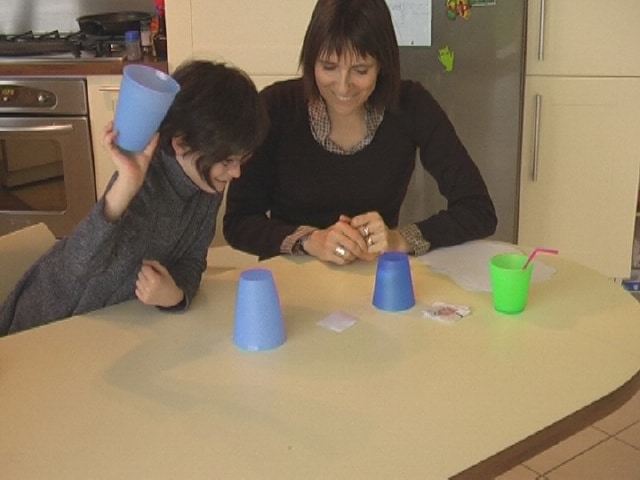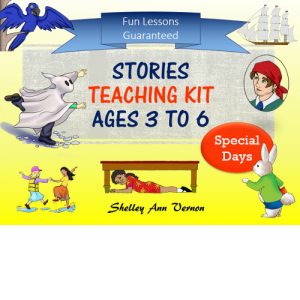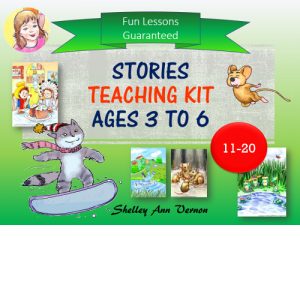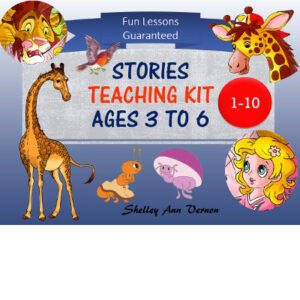How to teach private English lessons
This post has a private video on how to teach private English lessons. Only ‘Teach Your Child English’ book owners have the password. The lesson commentary below the video is also inside the book.
Learn how to teach private English lessons and watch Shelley and Anna on animals and ‘I’m hungry.’
Anna: Structured Lesson Video Commentary
Target Language
A lesson to teach: lion, fox, cat, bird, snake, spider, ant and “I’m hungry”.
About the lesson
Anna is six, and this is my second private English lesson with her.
In bold, you have the game’s name as it appears in this book. Then you have the position on the video where you will find that game if you want to fast forward or just watch a particular game for a refresher. The timings also show how long I spent on a specific game before changing. Timings are not set in stone, and by observing your pupil, you know whether it’s time to move on. Finally, there are notes on the teaching process shown. The game rules are not explained in the commentary, as you’ll find that under the game itself, which appears in the book in alphabetical order.
1. Show Me: (0:00)
Show Me is a listening game to introduce new vocabulary. Notice how I start with three animals and feed more in up to five. However, when I strung three animals together, “spider, snake, cat,” that was too fast since I had only just introduced the cat. So I had to help Anna by saying them individually again and then backing off and making it simpler.
2. Jump The Line: (2:17)
Listening game to continue working with the vocabulary and introduce two more new words. As we set up the game, I talked to Anna in English, although she couldn’t understand a thing. Please don’t follow my example there, as it’s best not to chat too much but stick to repeating the same sentences. For example, when I say, “stand up,” Anna understands as I gesture to her. That’s the way to use extra English in the lessons outside of the target vocabulary, not by chatting away. Then I demonstrate the game, but Anna does not quite understand it immediately. So, to save time, I tell her the rules of the game in French. If you are a teacher and don’t speak the native language, continue to demonstrate until your pupil knows what to do.
As I saw that Anna could not handle the three words in a row in the previous game, I went back to doing single animals at the start of this game and only after a while string two together. Then I introduce two new words, lion and ant. The first few times I say these words, I have to mime the animal as Anna cannot remember them. This kind of game uses TPR – total physical response – a fancy way of saying that the pupils move and use their bodies, which helps them learn quicker.
Being positive
When Anna makes a mistake and jumps on the fox and snake instead of the spider and the snake, I don’t say, “no.” Instead, I say, “snake is good, and the spider?” This way, Anna does not hear a negative word. Instead, I focus on the part she got right before giving her another chance to get the spider right too.
3. Find Me: (5:17)
More listening practice. I have not hidden the cards here; I just spread them about in plain view. Notice how I string out the counting when Anna brings me the fox instead of the spider and help her get the correct picture by miming. She ALWAYS gets back in time with the right image. I count pretty fast to give the game a bit of excitement. It would have been better to have Anna play this barefoot as she might have slipped on the tiles with her socks on.
4. Vocabulary Aim and Throw: (7:04)
See how we are using rolled-up socks to play and a skipping rope – with all these games, use things you have to hand in your house. An imaginary line is acceptable if you are short of any prop or a teacher and do not want to show up to the lesson with a suitcase. Having said that, props add to the fun and novelty, especially for the younger children. Anna throws the sock from closer, so it’s easier for her. That’s a way to have a genuine competition and still lose! See how the animals I get her to aim at are close to her, so she’s more likely to hit them.
Then I ask her which animal I should aim at and this is the first time she has been asked to say the words. Since it’s done naturally in the context of a game, she does not feel pressure, or that she is being forced to repeat words pointlessly, just for the sake of saying them. This is a key point with the games; they provide a meaningful context to use the language. Anna HAS to say the words to play. She says “snake” with a funny pronunciation, so I repeat it a couple of times, but without saying, “no, say it like this….” I just repeat it so she can hear it said correctly again.
She’s so delighted when I miss!
She’s so delighted when I miss! When I say “yes or no?” I have not taught her those words yet, but she knows what I mean from the context and says “no.” Notice how she did not say “non” in French – that shows how the “extra” language goes in bit by bit as part of the process. When I say, “Which one? which animal?” again, she knows what I mean from the context and shows her understanding by saying “fox.” So be careful not to chat away; you’ll get better results with fewer words used in context with gestures to clarify meaning.
After a while, I move the pictures remaining closer so the game does not drag on forever and Anna will have success aiming at the pictures. See how I help her when I say “cat or bird, cat or bird?” That’s a reminder of those words so she can say one of them. Finally, she wants to see who has won, so we count up our cards.
5. Speaking: practice (12:37)
This is not a game. Now we spend a few minutes concentrating on saying the words. Notice how I don’t go through all seven animals in a row but show two, then go back to the first one, on to a third, back to the second, and so on. This repetition helps your pupil remember. If you go straight through all seven words in a row, chances are you’ll have to help the pupil every time over and over again. When Anna needs help, notice how I start by giving her the beginning of the word.
6. Miming Games: (14:12)
Here we take it in turns to imitate the animals and guess which one it is. I left the pictures out as prompts, and that helps a lot as Anna can look at the pictures and decide which one to mime. (My friend, who is filming, puts in his contribution here and asks for a “little monkey” because that’s what he calls his niece, but she’s not too keen on the nickname).
7. Listen: (16:07)
I went a bit fast at the start of this game pretending to chase Anna when I was saying an animal, and it fooled her repeatedly. I should have played more simply for a few goes, just repeating the animals without pretending to chase her. Then once she had the hang of it, I added that extra element. Notice how I say, “I’m hungry” I make sure that she is nearer the tree than I am. She wants a turn too, so I run slowly the first time and don’t let her catch me. After that, I let her catch me but made it seem as if I really could not escape. If we hadn’t been filming, I would have played this for longer.
8. Diving for Treasure: (18:31)
This is another listening game. I’d most likely continue with speaking games in a real lesson, but I wanted to demo plenty of games for you. Here Anna has to dive to the bottom of the ocean to save the animals without breathing. After seeing how easily she did it for the first animal, I gave her a longer route to run to make it more of a challenge.
9. Speaking practice: (21.30)
We go through the animals one more time, notice how much better Anna does them this time than ten minutes earlier. You may be surprised at just how long it takes, but what I’m going for is to make the pupil remember these words and be confident saying them and pronouncing them well. As this is Anna’s first exposure to English other than some counting, it’s normal for her to need all this repetition. If you do sessions regularly, you will find the pace of learning increases as the child gets used to hearing and saying English phonemes. As you introduce new vocabulary themes and language, it’s always the same sounds that return.
10. Getting Warmer / Hide And Seek: (21.55)
This is a hide-and-seek game. Anna introduces the “getting warmer” part in French when I need help finding the flashcards. So this is a simplified version or variant of the game. There are umpteen ways to vary the games, and it’s good to play them differently to keep things fresh. Once you have been using the games for a while, ideas will come to you on how to vary them. Your pupil or child will most likely have ideas to contribute, seeing as children are experts at playing.
When Anna finds the ant, she says, “and.” However, I don’t correct her at this point. Indeed, i don’t correct everything as it can be very discouraging. If you’ve ever tried to speak a foreign language, you might know what I mean when I say that being constantly interrupted and corrected is perturbing. Sometimes it’s best to let things flow, and pick another moment to make corrections. So, I sort out that and-ant mistake later on. When Anna is counting up the cards the first time, notice how she hesitates on “four” but that I don’t jump in. Instead, I give her the space and time to think, and sure enough, she does think of the number on her own. Obviously, you don’t want to sit there for AGES not saying anything, but don’t jump in the whole time either.
Now Anna wants to hide them. That was not part of my lesson plan, but I’m not going to deny her a turn, and Anna is the sort of child who likes to be in charge and have a turn at everything!
How to teach private English lessons fishing game
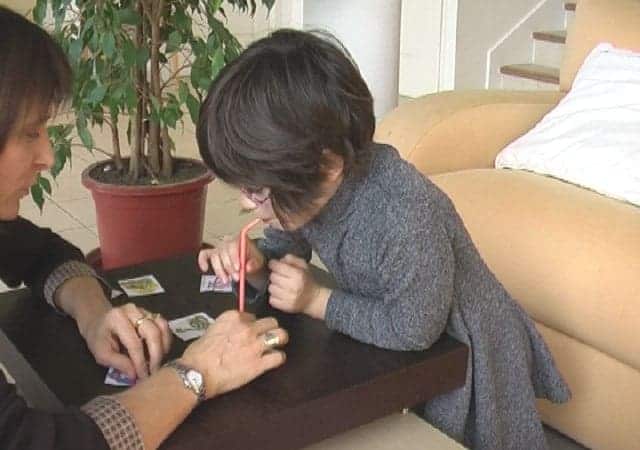
11. Fishing: (28.10)
See how Anna blows on the pictures at the beginning. Moving things by blowing through a straw is probably a game she has played before. Although blowing is a mistake, your pupil has just given you a new game idea! Therefore, always be on the lookout for variants while you are teaching.
So, at first, Anna thinks she has to blow, not suck on the straw. However, after we solve that, she still has trouble. I let her keep trying because I’ve played this game with four-year-old children, and I know it’s within their capacity. That said, I think it might be too hard, and therefore frustrating, for a three-year-old. I cut a little of the film here as Anna took a while to master picking up the animals. Eventually, I tell Anna she can keep everything and practise, but she picks the straw up again, and this time she succeeds. So, in short, let your child persevere, and if they fail, try again in another session. Eventually, your pupil will be able to do it.
12. Biscuit Tin: (31.22)
Demonstrate first, then play. I incorporated “Getting Warmer” into this since Anna had introduced the idea herself during the hide and seek game. Watch out to place the tin quietly, or if possible silently, as otherwise, it’s a dead giveaway as to where it is. You could also use this game to give directions such as left, right, start, stop, etc.
13. Clapping Games: (34.30)
At first, I let Anna show me the clapping she’s been doing with her sister counting. Notice how she misses the number five the first time. However, I don’t interrupt her, and the second time she counts to ten, she gets it right. That’s proof that jumping in and correcting every little mistake is unnecessary.
Then we try repeating the animals and adding one each time. I explain it very badly at first, and it’s entirely my fault that the game is slow to get going. Going to four animals in a row was too much for Anna. So, an option is to do three words, then go back to one again and repeat before adding a fourth, or go back to one and use three different nouns.
14. Stepping Stones: (36:47)
See how Anna slips on the flashcard and chooses to remove her socks – anticipate this to avoid a potential accident (unlike me in the demo)! Anna is not so good at naming them now because she’s been going for 45 minutes. We should either have a break or call it a day. I wanted to show you a few more games, so we carried on anyway, but you can see that her concentration is fading. Therefore, I’m prompt her by giving her the sound that starts the word. Then we make it different by having her do it backwards. Finally, Anna gets involved in arranging the flashcards.
15. Three Cups: (39:04)
Anna has another game in mind, but I insist on giving her my version, where she tries to follow a specific cup. We do that with the fox, and she finds it easily because I did not have three identical cups. Using different cups and moving them slowly is a good idea with a three-year-old, so it’s easier to keep track of a cup. However, you need the same cups with children Anna’s age. In addition, you need to move them pretty fast to make the game a challenge. Then Anna wants to play her version anyway (at 48:25) where she does not look. Her game is based on luck, so we do that too. Notice how she finally gets the “ant” pronunciation just right with the “t” at the end.
16. A Story: (42:23)
Now I tell Anna a short story, just so I could demo it for you – but I have to do it pretty quickly and cut much of the dialogue because Anna needs a break now. This story is part of a series of twenty stories available separately to these games and suitable for ages 3 to 5 (possibly from 2 they are OK too). Anna is at the upper age limit for these stories. Notice the ‘I’m Hungry’ phrase that I taught Anna early in the lesson. After all the animals have been eaten, the lion gets hiccups and the animals come out again.
16. A Story: (42:23)
Now I tell Anna a short story, just so I could demo it for you – but I have to do it pretty quickly, and cutting much of the dialogue because Anna needs a break now. This story is part of a series of twenty stories available separately to these games and suitable for ages 3 to 5 (possibly from 2 they are OK too). Anna is at the upper age limit for these stories. The “I’m Hungry” phrase comes in that I taught Anna earlier on in the “Listen” game. After all the animals have been eaten the lion gets hiccups and the animals come out again.
How to teach private English lessons further resources
Stories for one-to-one tuition
-
Preschool
Special Days Stories Teaching Kit + PowerPoints
Rated 0 out of 5€39.97Original price was: €39.97.€29.33Current price is: €29.33. Add to cart -
Preschool
ESL Preschool Stories 11-20 Teaching Kit + PowerPoints
Rated 0 out of 5€39.97Original price was: €39.97.€29.33Current price is: €29.33. Add to cart -
Preschool
ESL Preschool Stories 1-10 Teaching Kit + PowerPoints
Rated 0 out of 5€39.97Original price was: €39.97.€29.33Current price is: €29.33. Add to cart
If you would like paperback copies of Shelley’s story sets with lesson plans, please visit her Amazon author page.
If you think Amazon are rich enough, download resources for how to teach private English lessons from me !
For further tips on how to teach private English lessons please check this post on how to tutor a child.
